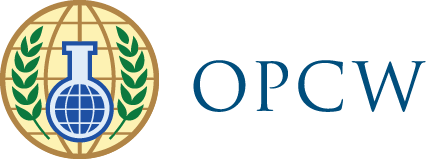OPCW recommends that the following information is included in the Pre-Inspection Briefing for an OCPF facility.
A. Introduction of participants
-
Host team
- Names and functions
-
Facility personnel
- Participants names and functions
B. General information about the facility
-
Brief history of the facility and basic information
-
Type of industry (e.g., fertilizers, pharmaceuticals, pesticides, plasticizers, paints, soaps, etc.)
-
Management, organisation, operations, environment
-
Certificates of accreditations (e.g., ISO, FDA, etc.)
-
Security features (e.g., fence/wall, CCTV, patrols, others)
-
Any changes in the facility (operational, organisational) since the last inspection (if applicable)
-
Number of employees
-
Aerial view map indicating:
-
Location in relation to Point of Entry (POE)
-
Distance from POE
-
-
Facility layout indicating:
-
Boundaries and gates
-
Total area of the facility
-
C. Facility safety measures
-
Related to inspection conduct:
-
No operation/touching of equipment
-
Need for escort
-
-
Related to facility:
-
Safety hazards and safety procedures
-
Specific personal protective equipment
-
Emergency alarms and response procedures
-
Evacuation routes
-
Assembly points
-
Location of medical facilities and nearest hospital (in km)
-
D. Logistics and administrative information
-
Working hours: administration and operations
-
Working spaces
-
Inspectors and escort team working spaces (offices), and briefing areas
-
Set-up inspection team office (lockable, power supplied, available during the entire inspection period, equipped with desks and chairs)
-
-
Communications/mobile phone policy
-
Transportation
-
Lodging and meals
-
Security and badging procedures
E. Physical layout
-
Provide facility layout or comprehensive list indicating the following:
-
Declared DOC/PSF facility(s)
-
Schedule 2/Schedule 3 facility(s) (if any)
-
Common infrastructure (e.g., QC/R&D laboratories, waste treatment, maintenance, warehouses, pilot facilities, medical facilities, etc.)
-
Non-declarable facilities (e.g., formulation, polymers, inorganic chemicals, etc.)
-
Other companies/facilities which may be physically located within the same boundary, but may not (operationally) form part of the facility
-
GPS reading point (if coordinates are declared)
-
F. Detailed information about the chemicals produced at the facility
-
Types of organic chemicals produced (expressed in terms of PGC)
-
List any Scheduled chemicals at the facility even if below declaration threshold
-
Quantities related to declared/declarable activities (indicate any changes in relation to the declared data)
G. Detailed information about the facilities
-
Consider inclusion of the following information for each DOC/PSF facility:
-
Chemical production quantities per facility (e.g., annual summary)
-
Types of chemical reaction(s)
-
Main process and downstream processes (e.g., filtration, distillation, centrifugation, etc.)
-
Materials of construction (e.g., SS, CS, Hastelloy, etc.)
-
Mode of operation: batch/continuous
-
Dedicated/multipurpose
-
Type of control (e.g., manual, automatic, etc.)
-
Associated infrastructure (e.g., tank farms, laboratories, etc.)
-
Specific safety features (e.g., detectors, PPE)
-
H. Records to be reviewed
-
The records review process is not part of the PIB and therefore these documents should not be included in the PIB material.
-
It is highly recommended to have these documents ready at the beginning of the inspection, to optimize the inspection process.
-
The following is a non-exhaustive list of relevant records generally requested and accessed by OPCW inspectors during the records review process
|
Record Name |
Purpose |
|
ISO or other certifications and Business Registration documentation |
To verify name, owner, and address of the facility |
|
Production records/SAP system and methodology of record capturing |
To verify the aggregate amount of the declared DOCs |
|
Hard copy of production records such as batch log sheets, production orders |
To verify the consistency of production data |
|
Complete list of chemicals handled at the facility |
To verify the absence of Schedule 1 chemicals and undeclared declarable schedule chemicals and activities at facility |
|
Records of activities related to undeclared Schedule chemical present at the facility (if any) |
To verify if the scheduled chemical is below declaration threshold |
-
Other records that might be requested for clarification purposes are as follows:
|
Record Name |
Purpose |
|
Technical data (e.g., SDS of the chemicals) |
To verify whether a chemical is a DOC or PSF or the composition of a mixture |
|
Basic chemistry involved |
In rare cases to verify the potential production of unavoidable scheduled chemical as by products or given the presence of schedule chemical to justify its presence |
|
Waste analysis |
To verify absence of any undeclared scheduled chemicals |
List of acronyms
|
Acronym |
Definition |
|
CWC |
Chemical Weapon Convention |
|
DOC |
Discrete Organic Chemicals |
|
ISP |
Inspected State Party |
|
PIB |
Pre-Inspection Briefing |
|
PPE |
Personal Protection Equipment |
|
PSF |
An unscheduled discrete organic chemical containing the elements phosphorus sulfur or fluorine |
|
VA |
Verification Annex |
|
POE |
Point of Entry |
|
CS |
Carbon Steel |
|
SS |
Stainless Steel |
|
OCPF |
Other Chemicals Production Facility |
|
SDS |
Safety Data Sheet |
|
PGC |
Product Group Code |
References
Further examples and guidance on how to prepare a PIB:
